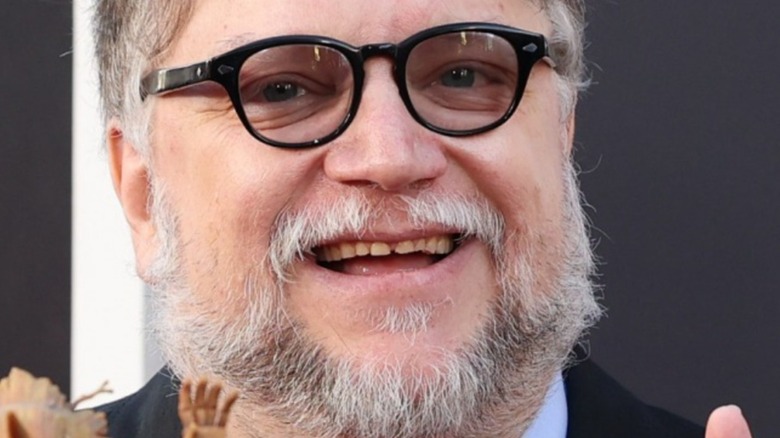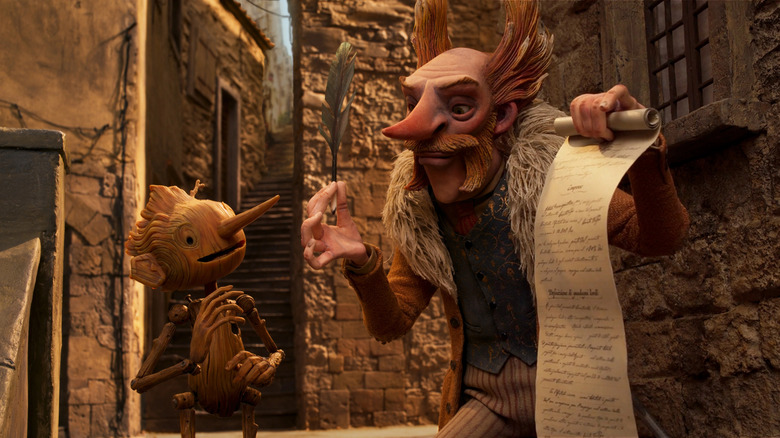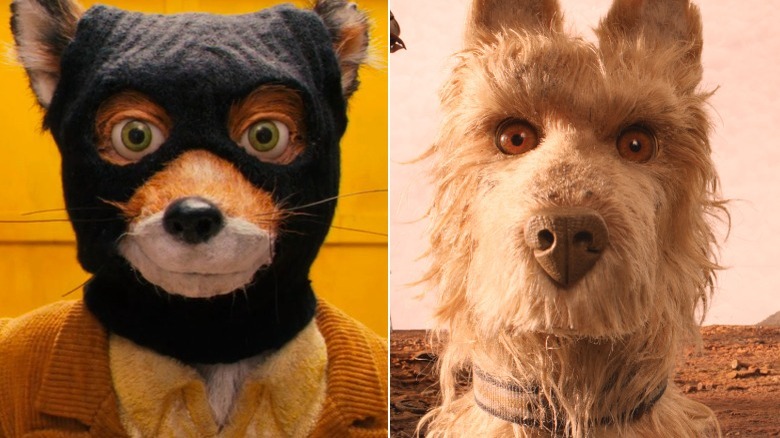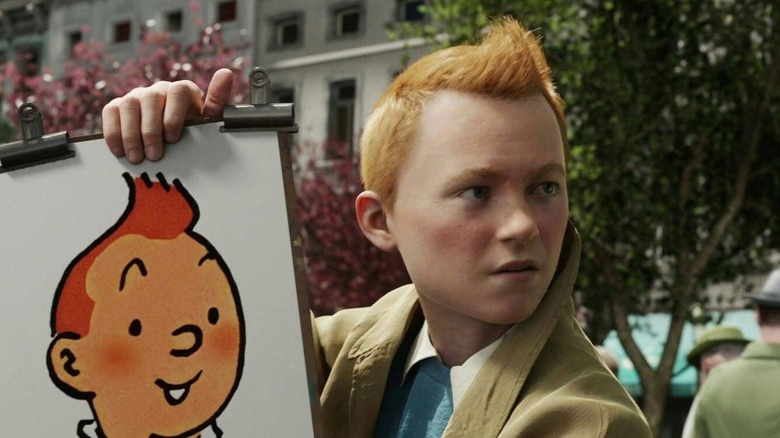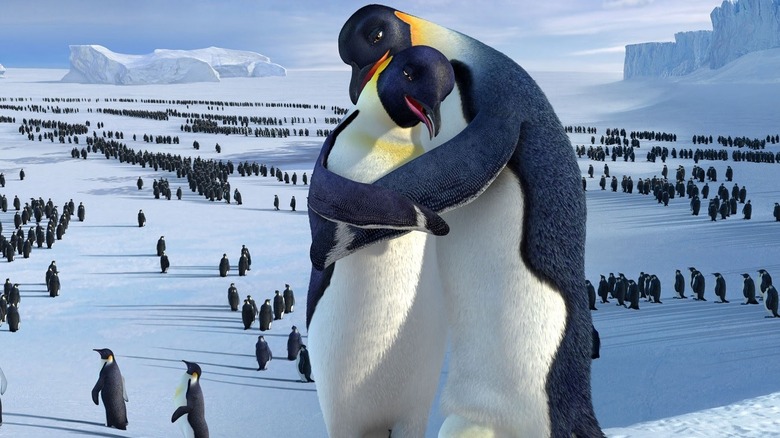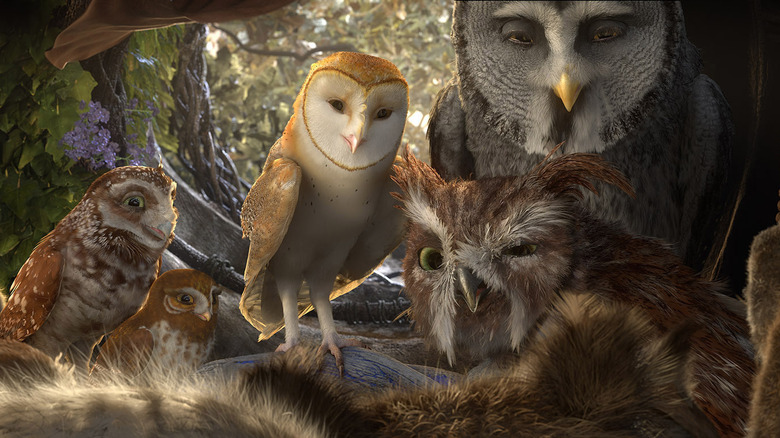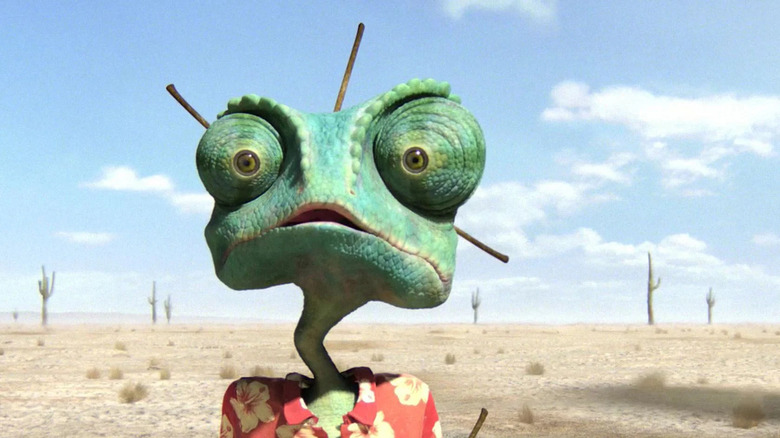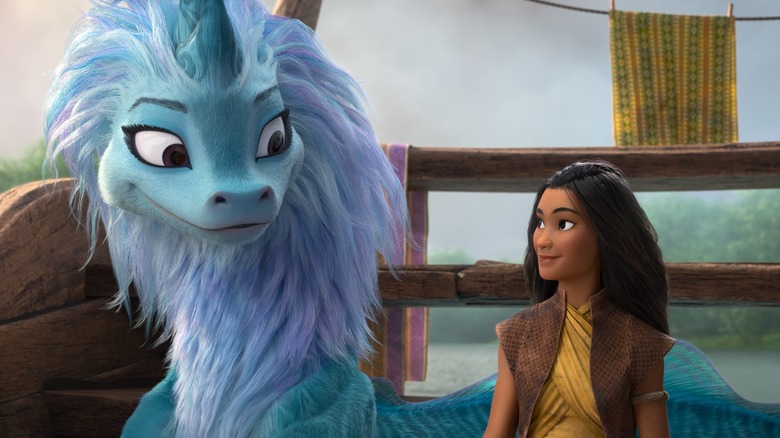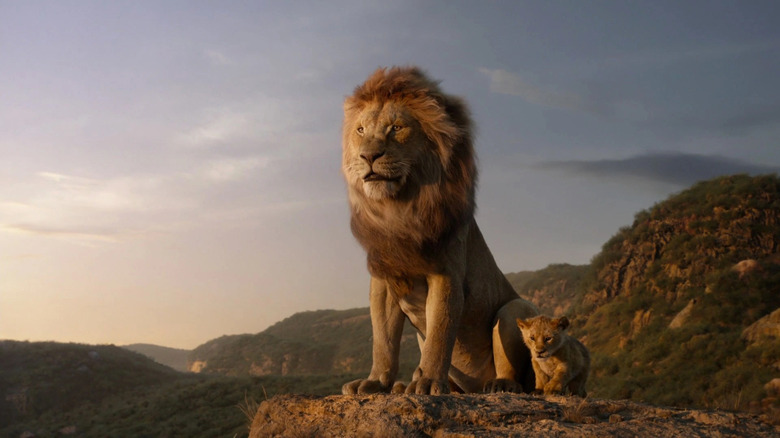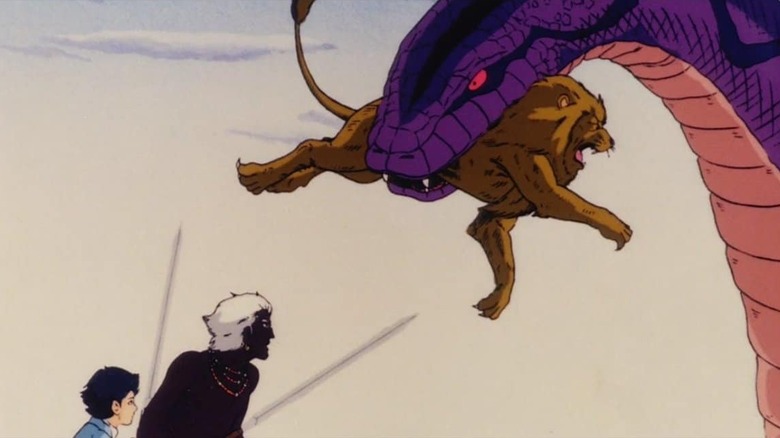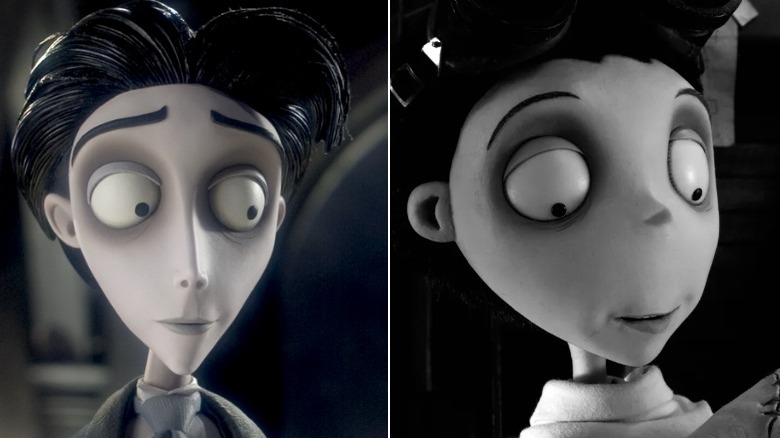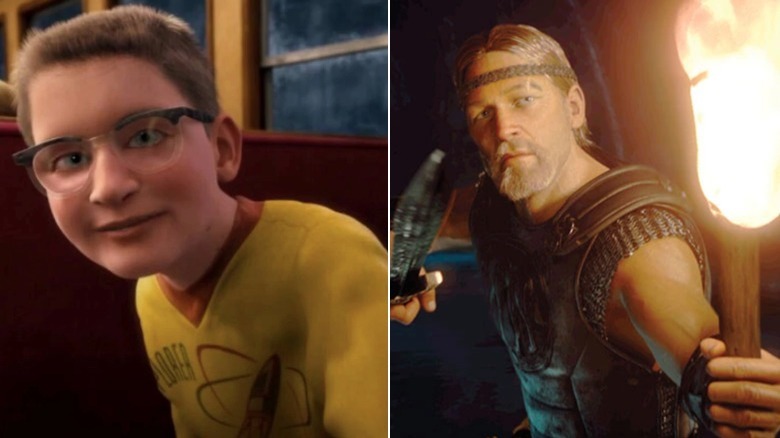11 Times Live-Action Directors Made Animated Films
The medium of animation doesn't always get the respect it deserves from the entertainment industry at large, often being pigeonholed as merely children's entertainment. However, animation is an art form that offers unlimited potential for storytelling and requires serious skill to make — both qualities that have earned animators the admiration of live-action filmmakers with superior taste. In what feels like an increasingly frequent occurrence, some of these live-action film directors are inspired to try their hands at directing an animated film themselves ... and when that goes well, sometimes they end up making even more movies in this different medium.
Because animation allows a director to have precise control over every frame, many of Hollywood's most distinctive auteurs have been able to express their styles in perhaps their purest form through the medium. The extensive special effects required of most big-budget live-action movies these days have also helped prepare directors for the requirements of making a movie entirely (or almost entirely) through animated means. The following directors have entered the world of animation to varying degrees of success, but the hit ratio is surprisingly high, with many of these films on this list going to win major awards and massive praise from both critics and general audiences of all ages.
Guillermo Del Toro's Pinocchio
In addition to being one of the best directors of live-action fantasy and thriller films, Guillermo Del Toro has a long history with animation. He's been an executive producer or creative consultant for many movies at DreamWorks Animation, and created the studio's "Tales of Arcadia" franchise (featuring "Trollhunters," "3Below," and "Wizards") for Netflix. He also produced "The Book of Life" and directed the opening sequence for "The Simpsons" episode "Treehouse of Horror XXIV." His first directorial credit on an animated feature film is a project that he's had in the works since 2008: a fresh adaptation of Carlo Collodi's "The Adventures of Pinocchio."
"Pinocchio" has been adapted to the screen countless times; in 2022 alone, there was also Robert Zemeckis' live-action remake of the classic Disney animated version and the much-mocked Pauly Shore-starring English dub of the Russian cartoon "Pinocchio: A True Story." "Guillermo Del Toro's Pinocchio," co-directed by Mark Gustafson, stands out from the crowd for many reasons: The film features gorgeous stop-motion animation, original musical numbers, political commentary via the Mussolini-era setting, and a respect for the darkness of Collodi's original story while also featuring new subversive twists. Critics are absolutely loving this Netflix release, which the streaming service has campaigned not only for the best animated feature Oscar but for the best picture Oscar.
Fantastic Mr. Fox, Isle of Dogs (Wes Anderson)
Wes Anderson's live-action films have such meticulous art direction that they're commonly compared to elaborate dioramas. It's only fitting that stop-motion animation films made with actual dioramas have been such a perfect fit for the beloved auteur. He's directed two films in the medium, and both of them have been nominated for the best animated feature Oscar.
Anderson's first stop-motion film, 2009's "Fantastic Mr. Fox," is an adaptation of Roald Dahl's children's book about a fox stealing food for his family from angry farmers. The voice cast includes such big names as George Clooney and Meryl Streep, and regular Anderson players like Jason Schwartzman and Bill Murray. Even when working within the confines of an animated family film, Anderson makes the material his own, offering his distinctive offbeat humor, visual panache, and thoughtful handling of identity crises and familial dysfunction.
Anderson returned to animation in 2018 with "Isle of Dogs," an original story set in future Japan where an outbreak of canine flu is used as an excuse to deport all dogs to an island covered in trash. Twelve-year-old boy Atari Kobayashi escapes to this island to rescue his dog Spots, while American transfer student Tracy Walker works to uncover an anti-dog government conspiracy. The dogs speak English, but all Japanese dialogue is presented without subtitles. Rated PG-13, "Isle of Dogs" is a darker, more political film than "Fantastic Mr. Fox" and was targeted more at the arthouse crowd than families.
The Adventures of Tintin (Steven Spielberg)
Steven Spielberg has long been a fan of animation; at an AFI seminar in 1978, he argued that "all directors should be animators first." Spielberg has attached his name to various cartoons as an executive producer, from "An American Tail" to "Animaniacs," and co-founded DreamWorks, which spun off its highly successful animation department into a separate studio. But his first and thus far only foray into directing an animated film was 2011's adventure movie "The Adventures of Tintin: The Secret of the Unicorn."
Spielberg and producer Peter Jackson have both described themselves as "fanboys" of the original "Tintin" comics by Hergé. Had this adventure, based on "The Secret of the Unicorn" storyline, been a bigger hit, there were plans to make sequels, with Spielberg and Jackson alternating as directors. However, while "The Adventures of Tintin" was mostly well received, with critics generally praising the bravura action sequences and the Golden Globes awarding it the best animated feature film award, it was never quite popular enough for those sequels to materialize. You can blame a lack of familiarity with the source material in the United States (the box office was far stronger internationally), or perhaps the pseudo-realistic motion capture animation fell too much into the "uncanny valley" for most people's tastes.
Happy Feet, Happy Feet Two (George Miller)
George Miller, best known for directing the action-packed post-apocalyptic "Mad Max" movies, made a surprising career turn into family films by co-writing and producing the 1995 best picture nominee "Babe" and directing its darker, weirder 1998 sequel "Babe: Pig in the City." He followed up the effects-heavy porcine duology with two more talking animal movies, these ones made almost entirely via motion capture computer animation (with a few surprise live-action sequences): "Happy Feet" in 2006 and "Happy Feet Two" in 2011.
The only sure thing one can predict about any George Miller film is that it's sure to be weird, and the "Happy Feet" movies fit the bill as jukebox musicals about dancing penguins, religious intolerance, and ecological disaster. The first movie's unique mix of silly cuteness and dark subject matter managed to charm audiences and critics alike, doing well at the box office and winning the best animated feature Oscar. "Happy Feet Two" was decidedly less successful and is mostly a forgotten footnote in Miller's filmography, though a subplot with Matt Damon and Brad Pitt voicing existentialist krill is at least proof Miller hadn't abandoned his sense of bizarre creativity.
Legend of the Guardians: The Owls of Ga'hoole (Zack Snyder)
In the late 2000s, Animal Logic, the animation and effects studio behind the first "Happy Feet" film, seemingly decided it was a winning formula to hire stylistically distinctive directors best known for R-rated ultra-violent live-action films to make PG-rated computer animated films about birds. It paid off with George Miller and "Happy Feet," so why not give Zack Snyder, fresh off the success of "300" and simultaneously working on "Watchmen," a movie about owl warriors?
Like most of Zack Snyder's films, "Legend of the Guardians: The Owls of Ga'Hoole," based on the "Guardians of Ga'Hoole" books by Kathryn Lasky, received mixed reviews from critics upon its release in 2010. Many praised the film's beautiful animation, but the story and screenplay received some harsh criticisms. Unlike Snyder's other films, which have developed intense fanbases despite critical drubbings, "Legend of the Guardians" did not build up a passionate army of defenders. Still, this change of pace for Snyder is very much in his wheelhouse both for its aesthetic and its celebration of mythology; video essayist Patrick H. Willems has suggested it may be the key film to understanding Snyder as an artist.
Rango (Gore Verbinski)
After the first three "Pirates of the Caribbean" films ("The Curse of the Black Pearl," "Dead Man's Chest," and "At World's End") collectively grossed over $2.7 billion at the worldwide box office, director Gore Verbinski began work on yet another collaboration with Johnny Depp: an animated neo-noir Western about a chameleon actor named Rango. Though Verbinski told IGN he intended this to be a relatively "small" production, he soon discovered just how intense and time-consuming being a solo director on an animated film really is.
"Rango" was the first fully animated film produced by the legendary effects house Industrial Light and Magic, and came to theaters in 2011 following one of the strangest movie advertising campaigns of all time (seriously, take a look at the film's first teaser trailer). Filled with witty cinematic references to the likes of "Chinatown," "The Good, the Bad, and the Ugly," and "Fear and Loathing in Las Vegas," "Rango" was one of the most original and visually distinctive American animated films of its year and went on to win the best animated feature Oscar.
Raya and the Last Dragon (Carlos López Estrada)
Walt Disney Animation Studios develops its films internally, and as such, the directors of its films have almost always been animators or storyboard artists who've worked their way up within the studio. This means the hiring of Carlos López Estrada, a live-action director best known for the indie dramedy "Blindspotting," as a director on "Raya and the Last Dragon" was extremely unusual for the studio. Also unique about Estrada: He is the first person of color to direct a Walt Disney Animation Studios film (via The Hollywood Reporter).
Estrada was approached to develop a new project for Disney in 2019 off the strength of "Blindspotting" (via Variety), and entered a "creative leadership" position for which he's been credited on "Frozen 2," "Encanto," and "Strange World." He surprisingly found himself hired to join established animation director Don Hall in replacing former directors Paul Briggs and Dean Wellins on the production of "Raya and the Last Dragon" (via Total Film). The Southeast Asian-inspired fantasy epic, released simultaneously in theaters and on Disney+ in the spring of 2021, is one of the most action-packed of all of the studio's princess-focused movies. It features a strong heroine seeking to restore balance to five nations that have fallen into fear and distrust and helping a dragon regain her magic powers.
The Lion King (John Favreau)
Yes, the 2019 remake of "The Lion King" often gets discussed in the context of Disney doing "live-action" remakes of its animated classics. Still, Jon Favreau's film can't possibly be considered "live-action" by any stretch of the imagination. At least Favreau's 2016 "The Jungle Book" remake included a few human actors amidst all of the virtual animals and environments. There's exactly one live-action shot of a sunrise in the 2019 "Lion King," included mainly just to show off how seamlessly convincing all the other CGI settings were (via IndieWire).
Disney might have refused to acknowledge this photorealistic CG film was a work of animation, refusing to submit it to the best animated feature Oscar, but the Golden Globes recognized it in its best animated feature category. Whether anyone else would consider it the "best" of anything is a question; reviews were mixed, and even the more positive responses didn't feel this hyper-real remake matched the quality of the more stylized hand-drawn original. Despite the tepid response, nostalgia for the original animated classic and curiosity about the new effects technology boosted Favreau's "The Lion King" to technically become the highest grossing animated film at the worldwide box office (not adjusting for inflation).
Kenya Boy (Nobuhiko Obayashi)
The most obscure entry on this list (which is saying something, considering how hardly anyone remembers the Zack Snyder owl movie), the 1984 anime feature "Kenya Boy" is the only animated film in the filmography of the experimental Japanese filmmaker Nobuhiko Obayashi. IMDb lists Obayashi as having 75 directing credits over the course of a five-decade career (not even getting into his work in the field of TV commercials), the most internationally famous of these easily being his 1977 bizarro horror-comedy "House."
"Kenya Boy" is decidedly less likely to end up joining the Criterion Collection, and those who've seen it generally regard the film as an ambitious misfire for the extremely talented director. Based on a newspaper comic strip from 1951 by Souji Yamakawa, the story about a Japanese boy lost in the wilds of Kenya during World War II already felt incredibly dated and uncomfortably jingoistic by the time the anime adaptation was released in 1984. Somehow dinosaurs, giant frogs, evil snake gods, and atomic bomb explosions all end up involved in this bizarre adventure which has been called "one of the most insane and inexplicable" anime ever made by Anime News Network.
Corpse Bride, Frankenweenie (Tim Burton)
Tim Burton is an outlier on this list in that he actually began his career as an animator at Disney, but his career as a director has been largely focused on live-action. Burton came up with the story and character designs as well as producing, but he didn't actually direct "The Nightmare Before Christmas" (Henry Selick did). But there are two animated features Burton did actually direct — both of which were nominated for the best animated feature Oscar, and both happen to have main characters named Victor.
"The Corpse Bride," co-directed by Mike Johnston, is based on an old Jewish folk tale about a man who accidentally finds himself engaged to an undead woman while practicing his wedding vows. The film is filled with Burton trademarks: a misfit protagonist, a mostly monochromatic palate with bursts of vibrant color, humorous depictions of the afterlife, music composed by Danny Elfman, a cast that includes Johnny Depp and Helena Bonham Carter.
Burton had solo directing credit on 2012's "Frankenweenie," a remake of his 1984 live-action short film of the same name. The original short film was deemed too scary for Disney to release at the time; 28 years later, the studio was much more supportive of the feature-length remake. Filmed in black-and-white and paying homage to "Frankenstein" and other classic monster movies, "Frankenweenie" is a boy-and-his-dog story where the boy has to resurrect his dog from the dead.
The Polar Express, Beowulf, A Christmas Carol (Robert Zemeckis)
Robert Zemeckis has perhaps the most unusual career arc of any filmmaker on this list in that he ceased working in live-action for a decade to focus entirely on making multiple movies with motion capture animation. Zemeckis already had a long career of pushing new ground in special effects in films like "Who Framed Roger Rabbit" and "Forrest Gump." "Roger Rabbit" successfully combined animated and live-action characters, so it makes sense why he'd be drawn to a technique combining animated characters with a live actor's performance.
Whether this change in artistic direction was successful is another story. His first mo-cap film, 2004's "The Polar Express," was the most successful at the box office of the three, particularly given its multiple Christmastime re-releases, but its not-quite-cartoony yet not-quite-realistic dead-eyed characters instantly came to define the "uncanny valley." "Beowulf" in 2007 and 2009's "A Christmas Carol" offered some improvements to the technology, but were very expensive to produce and failed to recoup their huge budgets.
Zemeckis also produced two additional mo-cap movies via his ImageMovers Digital studio: 2006's "Monster House," directed by Gil Kenan, and 2011's "Mars Needs Moms," directed by Simon Wells. The latter was ImageMovers' final film and the biggest box office bomb of its year. A mo-cap remake of "The Yellow Submarine" never surfaced, and Zemeckis would return to live-action, though he would still use extensive animation in films like "Welcome to Marwen" and his Disney+ "Pinocchio" remake.
